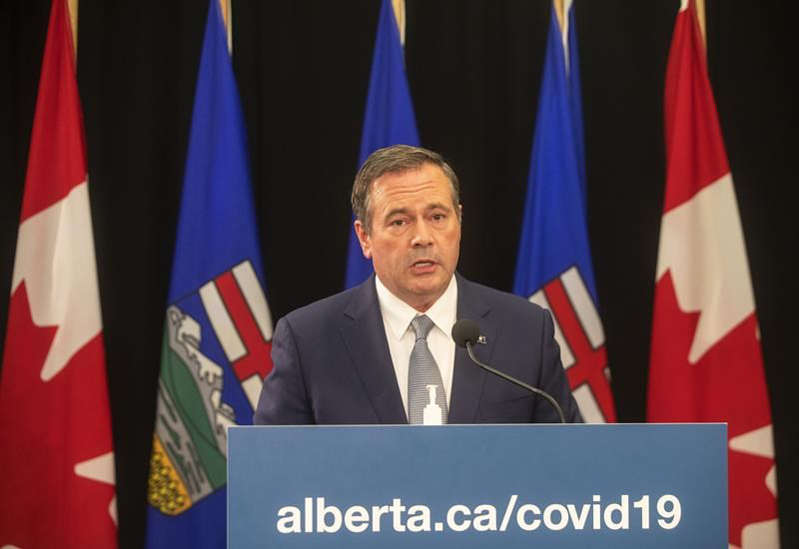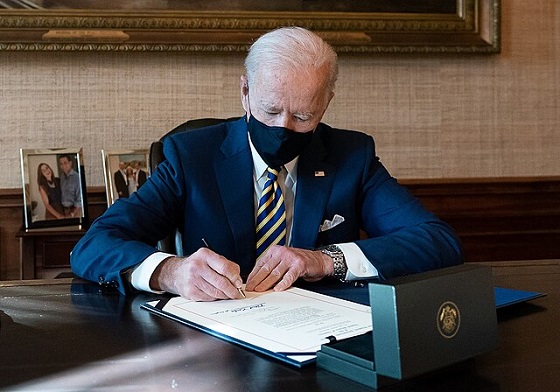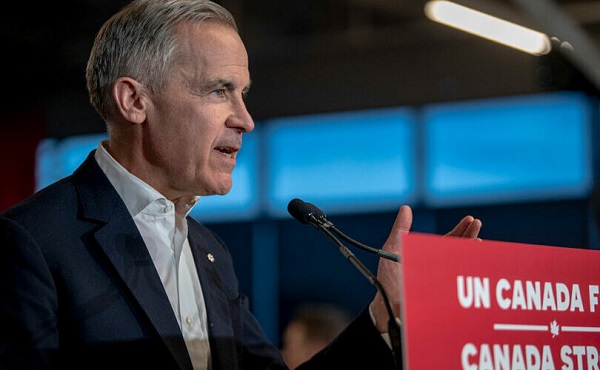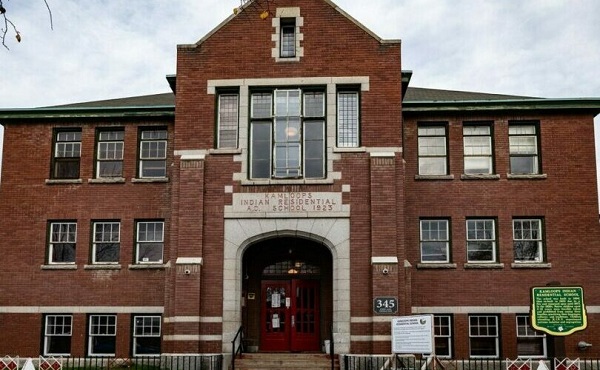Alberta
Half Capacity Crowds for World Junior Tournament – Alberta to restrict large gatherings to slow Omicron

More boosters, tests and measures to fight Omicron
Alberta’s government is taking further steps to strengthen vaccine protection and testing while bringing in new public health measures to reduce contact between Albertans as Omicron cases continue to grow.
All Albertans aged 18 and older can now book a booster shot, as long as at least five months have passed since their second dose, and Alberta has authorized the purchase of 10 million rapid tests.
New measures that will take effect on Dec. 24 will focus on avoiding super-spreader events by decreasing contacts in large capacity venues and limiting unrestricted activities where there is a high risk of transmission.
Albertans are also being asked to reduce their social contacts by 50 per cent during the holiday season.
New public health measures
The new mandatory measures taking effect at 12:01 a.m. on Dec. 24 are:
- For venues in the Restrictions Exemption Program – 50 per cent capacity limit at venues that seat more than 1,000 people. For venues with capacity of between 500 and 1,000 occupants, 500 is the limit.
- No food or drink consumption in seated audience settings or during intermissions in the above-mentioned venues.
- There is no impact on venues under 500.
- Maximum table capacity of 10 people in restaurants, pubs and bars. No mingling between tables.
- No interactive activities at restaurants, pubs and bars (e.g., dancing, darts and billiards).
- Restaurants, pubs and bars must stop liquor service at 11 p.m., and close at 12:30 a.m.
Restrictions continue for both indoor and outdoor social gatherings, weddings, funerals, places of worship and businesses. Albertans should also refrain from workplace social gatherings.
Masking remains mandatory in all indoor public spaces, including in facilities participating in the Restrictions Exemption Program. Masks should fit well and be of high quality. Albertans with risk factors for severe outcomes should wear medical masks in settings with those outside of their household.
COVID-19 boosters
All Albertans aged 18 and older who received their second COVID-19 vaccine at least five months ago can now book a third dose.
Albertans are encouraged to take the first mRNA vaccine available to them for a third dose. Both the Pfizer and Moderna vaccines offer a high level of protection against COVID-19, particularly against severe outcomes.
Pfizer will be offered to Albertans 18 to 29 years of age for booster purposes as a cautionary measure. While there is an increased risk of myocarditis in younger Albertans, especially in males, from Moderna, individuals are much more likely to experience myocarditis from COVID-19 infection than the vaccine.
All Albertans aged 18 and older can book appointments for third doses online with participating pharmacies or AHS by using the Alberta vaccine booking system or by calling AHS at 811.
At-home rapid test kits
In addition to ongoing orders for rapid tests from the Government of Canada, Alberta’s government will directly purchase up to 10 million rapid tests for anticipated delivery in January, allowing Albertans to secure immediate supplies.
More than 2.5 million rapid tests, or 500,000 rapid test kits, have already been made available to Albertans in the broad rollout that began on Dec 17. Additional supplies have been received from the federal government and are being shipped to participating AHS and pharmacy locations. If you have not already picked up your kit, visit alberta.ca/CovidRapidTests to find the location nearest you with available stock, as many locations still have supplies available.
“While these new measures will hopefully lower the risk at large events, our small everyday actions can have a big impact. This is why I appeal to all Albertans to reduce their number of contacts by half over the coming weeks, follow the guidelines already in place, and get the vaccine booster as soon as they are eligible. It’s the single most important thing anybody can do right now to protect themselves from Omicron.”
“These new measures, along with more boosters and rapid test availability, will help slow the spread of COVID-19. These efforts are critical as work continues to prepare our health-care system for potential challenges from the Omicron variant. I know Albertans are tired of the pandemic, but we need to take what we have learned from previous waves and urgently apply it to our current situation.”
“Now more than ever, it is important for Albertans to follow public health measures and consider how their actions may affect others. While we are still learning about Omicron, we do know that it is highly transmissible – cases are currently doubling in a matter of days. Reducing contacts will not only slow the spread of Omicron, but it can help us gain valuable time to prepare for what is to come.”
Alberta
Alberta takes big step towards shorter wait times and higher quality health care

From the Fraser Institute
On Monday, the Smith government announced that beginning next year it will change the way it funds surgeries in Alberta. This is a big step towards unlocking the ability of Alberta’s health-care system to provide more, better and faster services for the same or possibly fewer dollars.
To understand the significance of this change, you must understand the consequences of the current (and outdated) approach.
Currently, the Alberta government pays a lump sum of money to hospitals each year. Consequently, hospitals perceive patients as a drain on their budgets. From the hospital’s perspective, there’s little financial incentive to serve more patients, operate more efficiently and provide superior quality services.
Consider what would happen if your local grocery store received a giant bag of money each year to feed people. The number of items would quickly decline to whatever was most convenient for the store to provide. (Have a favourite cereal? Too bad.) Store hours would become less convenient for customers, alongside a general decline in overall service. This type of grocery store, like an Alberta hospital, is actually financially better off (that is, it saves money) if you go elsewhere.
The Smith government plans to flip this entire system on its head, to the benefit of patients and taxpayers. Instead of handing out bags of money each year to providers, the new system—known as “activity-based funding”—will pay health-care providers for each patient they treat, based on the patient’s particular condition and important factors that may add complexity or cost to their care.
This turns patients from a drain on budgets into a source of additional revenue. The result, as has been demonstrated in other universal health-care systems worldwide, is more services delivered using existing health-care infrastructure, lower wait times, improved quality of care, improved access to medical technologies, and less waste.
In other words, Albertans will receive far better value from their health-care system, which is currently among the most expensive in the world. And relief can’t come soon enough—for example, last year in Alberta the median wait time for orthopedic surgeries including hip and knee replacements was 66.8 weeks.
The naysayers argue this approach will undermine the province’s universal system and hurt patients. But by allowing a spectrum of providers to compete for the delivery of quality care, Alberta will follow the lead of other more successful universal health-care systems in countries such as Australia, Germany, the Netherlands and Switzerland and create greater accountability for hospitals and other health-care providers. Taxpayers will get a much better picture of what they’re paying for and how much they pay.
Again, Alberta is not exploring an untested policy. Almost every other developed country with universal health care uses some form of “activity-based funding” for hospital and surgical care. And remember, we already spend more on health care than our counterparts in nearly all of these countries yet endure longer wait times and poorer access to services generally, in part because of how we pay for surgical care.
While the devil is always in the details, and while it’s still possible for the Alberta government to get this wrong, Monday’s announcement is a big step in the right direction. A funding model that puts patients first will get Albertans more of the high-quality health care they already pay for in a timelier fashion. And provide to other provinces an example of bold health-care reform.
Alberta
Alberta’s embrace of activity-based funding is great news for patients

 From the Montreal Economic Institute
From the Montreal Economic Institute
Alberta’s move to fund acute care services through activity-based funding follows best practices internationally, points out an MEI researcher following an announcement made by Premier Danielle Smith earlier today.
“For too long, the way hospitals were funded in Alberta incentivized treating fewer patients, contributing to our long wait times,” explains Krystle Wittevrongel, director of research at the MEI. “International experience has shown that, with the proper funding models in place, health systems become more efficient to the benefit of patients.”
Currently, Alberta’s hospitals are financed under a system called “global budgeting.” This involves allocating a pre-set amount of funding to pay for a specific number of services based on previous years’ budgets.
Under the government’s newly proposed funding system, hospitals receive a fixed payment for each treatment delivered.
An Economic Note published by the MEI last year showed that Quebec’s gradual adoption of activity-based funding led to higher productivity and lower costs in the province’s health system.
Notably, the province observed that the per-procedure cost of MRIs fell by four per cent as the number of procedures performed increased by 22 per cent.
In the radiology and oncology sector, it observed productivity increases of 26 per cent while procedure costs decreased by seven per cent.
“Being able to perform more surgeries, at lower costs, and within shorter timelines is exactly what Alberta’s patients need, and Premier Smith understands that,” continued Mrs. Wittevrongel. “Today’s announcement is a good first step, and we look forward to seeing a successful roll-out once appropriate funding levels per procedure are set.”
The governments expects to roll-out this new funding model for select procedures starting in 2026.
* * *
The MEI is an independent public policy think tank with offices in Montreal, Ottawa, and Calgary. Through its publications, media appearances, and advisory services to policymakers, the MEI stimulates public policy debate and reforms based on sound economics and entrepreneurship.
-

 2025 Federal Election2 days ago
2025 Federal Election2 days agoRCMP memo warns of Chinese interference on Canadian university campuses to affect election
-

 2025 Federal Election1 day ago
2025 Federal Election1 day agoResearchers Link China’s Intelligence and Elite Influence Arms to B.C. Government, Liberal Party, and Trudeau-Appointed Senator
-

 Energy2 days ago
Energy2 days agoTrump signs four executive orders promoting coal industry
-

 COVID-191 day ago
COVID-191 day agoFauci, top COVID officials have criminal referral requests filed against them in 7 states
-

 COVID-192 days ago
COVID-192 days agoBiden Admin concealed report on earliest COVID cases from 2019
-

 2025 Federal Election1 day ago
2025 Federal Election1 day agoMark Carney vows to provide sterilizing puberty blockers to children ‘without exception’
-

 2025 Federal Election2 days ago
2025 Federal Election2 days agoThe status quo in Canadian politics isn’t sustainable for national unity
-

 Censorship Industrial Complex20 hours ago
Censorship Industrial Complex20 hours agoFormer residential school student refutes ‘genocide’ claims, recalls positive experience










